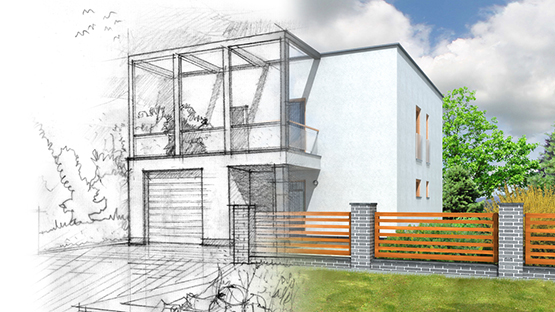Just How CDA Architects Combine Creative Thinking and Performance in Modern Style
Just How CDA Architects Combine Creative Thinking and Performance in Modern Style
Blog Article
The Vital Function of an Architect in Forming Lasting Urban Environments for Future Generations
The duty of an engineer in crafting sustainable urban atmospheres is significantly essential in reacting to the obstacles of climate change and urbanization. By effortlessly incorporating eco-friendly principles into their layouts, designers not just enhance the visual and functional top quality of urban rooms but additionally address pushing problems such as energy effectiveness and social equity.
Recognizing Sustainable Urban Style
Sustainable city design integrates ecological concepts with metropolitan planning to develop environments that are not only habitable yet additionally resilient. This approach stresses the value of integrating natural systems right into the city material, ensuring that advancement satisfies the demands of the here and now without endangering the ability of future generations to satisfy their very own requirements. Crucial element of sustainable urban layout include effective land usage, the promo of biodiversity, and the assimilation of environment-friendly spaces, all of which contribute to improved lifestyle for residents.
In addition, lasting metropolitan style focuses on the reduction of the metropolitan warm island effect, enhanced air high quality, and reliable stormwater management. It urges using eco-friendly sources and energy-efficient building methods, which considerably lower carbon footprints. Lasting city layout promotes social equity by developing accessible public areas and advertising mixed-use growths that cater to varied populaces.
With thoughtful preparation and cutting-edge layout methods, lasting city settings can boost neighborhood resilience against climate adjustment while cultivating economic growth. This alternative approach not just addresses immediate city obstacles but also lays the foundation for healthier, extra lasting cities for generations to find.
Key Duties of Designers
Engineers play a pivotal role in forming sustainable city settings by equating layout principles into substantial structures and spaces. Their obligations encompass a variety of activities that add to the total success of metropolitan layout tasks.
Most importantly, architects carry out complete website evaluations to comprehend the environmental, social, and social context of their jobs. This foundational expertise informs their layout decisions, making sure that buildings harmonize with their environments. They likewise take part in collaborative procedures with stakeholders, consisting of city coordinators, designers, and the neighborhood, fostering an inclusive strategy to urban growth.
In addition, designers are entrusted with developing designs that maximize energy efficiency, resource conservation, and functionality. They should stick to local zoning laws, developing codes, and sustainability qualifications, guaranteeing compliance while pressing the borders of innovation.
Moreover, designers are accountable for handling the style process, collaborating with different specialists throughout the building phase to make certain that the vision is understood properly (cda architects). Eventually, their role is not solely about aesthetics; it has to do with producing durable, flexible areas that improve the lifestyle for present and future generations, laying the groundwork for lasting city living
Innovative Products and Techniques

Additionally, developments in technology have actually caused the development of high-performance materials, such as insulated concrete forms (ICFs) and solar glass, which contribute to energy preservation and harness eco-friendly energy. Techniques such as passive solar style and green roof coverings further exemplify just how style can integrate with all-natural systems, minimizing dependence on fabricated cooling and heating.
Furthermore, the assimilation of smart products, which adjust to environmental modifications, uses encouraging avenues for enhancing building efficiency. These materials can reply to temperature fluctuations This Site or wetness degrees, enhancing convenience and sustainability.
Inevitably, the calculated choice and application of innovative products and strategies equip designers to produce city areas that are not only useful and visually pleasing however also durable and ecologically accountable, making sure a lasting future for generations to come. cda architects.
Neighborhood Involvement and Collaboration
The success of cutting-edge materials and techniques in sustainable metropolitan architecture is considerably boosted by active community interaction and partnership. Engineers must acknowledge that the constructed setting greatly influences the lives of neighborhood residents, making it critical to entail them in the style procedure. Involving the neighborhood promotes a sense of ownership and accountability, making sure that advancements not just meet visual and practical needs however additionally reflect the worths and aspirations of those that inhabit them.

Successful community involvement likewise aids in focusing on social equity within city development. By thinking about the voices of marginalized populaces, architects can produce spaces that are inclusive and equitable. In this method, area engagement and cooperation end up being important to attaining truly lasting urban settings that offer the needs of current and future generations.
Future Fads in Sustainable Architecture
An arising concentrate on flexible reuse and round economy principles is established to redefine the landscape of sustainable architecture. As cities face raising populace thickness and environmental difficulties, engineers are progressively transforming to approaches that optimize existing frameworks rather than seeking new builds. This method not just preserves social heritage but additionally dramatically decreases source intake and waste.
Furthermore, developments in innovation are forming future patterns in sustainable style. The combination of smart materials and structure systems permits for real-time energy monitoring, enhancing effectiveness and decreasing carbon footprints. Advancements such as environment-friendly roofings, living walls, and energy-generating exteriors are coming to be standard methods, further promoting environmental balance within metropolitan settings.
In addition, a shift towards biophilic design is obtaining traction, stressing the connection between nature and human well-being. By including all-natural components, architects create spaces that foster mental wellness while promoting biodiversity.
Conclusion
To conclude, engineers are pivotal beforehand lasting city atmospheres with their know-how in layout, ingenious products, and area engagement. By prioritizing energy efficiency and source preservation, these specialists add to the creation of resilient city spaces that satisfy the requirements of existing and future generations. The combination of ecological principles not only improves livability but also promotes social equity, guaranteeing developments resonate with the values and aspirations of the communities they serve.
Report this page